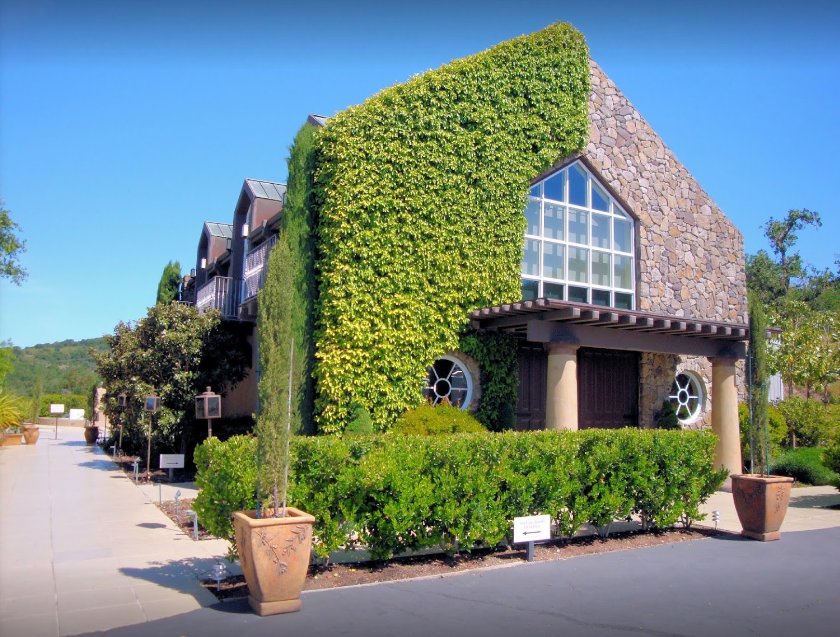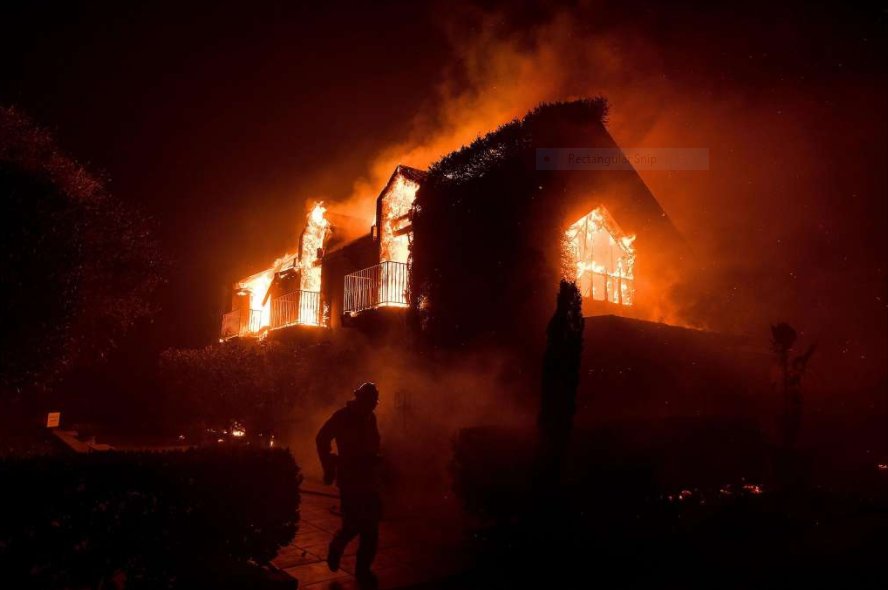Grapegrowing and Winemaking is a Hazardous Passion
A before and after of Signorello Vineyards in Napa. The winery was destroyed by wildfires, but fortunately it sounds like vineyards are intact (Image credit: Suzanne Espinosa/Twitter)
I will admit that I have lived the month of October with tunnel vision. I often forget how loaded my fall schedule gets, both personally and professionally. However, global catastrophic natural disasters are difficult to ignore. It has been a busy hurricane season, where Puerto Rico and the Gulf Coast regions and have been hit hard and are still recovering. There have been devastating earthquakes in Mexico. Then there are the raging California wildfires that are ripped through the heart of wine country in Napa, Sonoma, and Mendocino, and new blazes started to the south in the Santa Cruz Mountains area.
From the viewpoint of the wine drinker, this is really difficult news to hear. Some of us have visited Napa Valley or the Russian River Valley, taken tours of wineries, and enjoyed the romantic, peaceful landscapes of the manicured vineyards. We have made mental and emotional connections to these places, so when we read about a winery being decimated or fields on fire it hurts a little.
Now...take that unsettled feeling you have and multiply it by 100 or 1,000, and you can feel the same way a winery owner does. Or a vineyard worker. Or a tasting room manager.
Frosted grapes: great for some, terrible for many.
Sometimes, we take things for granted when we go pick up that California red blend in our local wine shop. Remember, it is an agricultural product that we enjoy. Grapevines are subjected to a range of weather conditions (wet, dry, cold, hot, sunny, windy); some grapes are built for excessive heat (Grenache) or cooler tempratures (Riesling), others aren't. Rain close to harvest time can lead to diluted grapes and humid conditions can lead to moldy grapes. Springtime frosts can damage tender shoots and buds that have yet to become grapes. Early fall frosts can kill off leaves that are necessary for photosynthesis to help grapes fully ripen. The vineyard manager will watch weather reports religiously to make a decision on when to pick grapes. Even during harvest time, making sure grapes are picked in cooler temperatures is paramount to preserving a grape's refreshing acids and preventing early oxidation.
The evil little monster that destroys vineyards: Phylloxera
Vineyards are also subjected to a variety of pests and diseases. Phylloxera is the most infamous in history; it is a louse that feeds on a vine's roots and slowly kills it. The Great French Wine Blight happened in the mid-1800s thanks to these evil little SOBs. 40% of French vineyards were wiped out, crushing the economy. This led to an important discovery that French vines could be grafted onto American roots to resist phylloxera's attacks. Vineyard owners also have to deal with birds and other animals trying to eat ripe grapes.
You also have other specialty producers who need perfect or near-perfect conditions to make the wines they want to. Champagne producers want less-ripe grapes, since the high acidity in those grapes is essential in quality sparkling winemaking. Icewine producers need frozen grapes on the vines; if they don't get that, no Icewine is made. Same goes for Sauternes, the nobly rotten sweet wine region. Sauternes needs consistent cool morning mists followed by warm dry afternoons in the fall to create the environment for a benevolent mold to set into healthy grapes, which concentrates sugars. If Sauternes doesn't get this defined weather pattern, no Sauternes wine is made. If the weather is too damp for several days, the bad mold can set in. Grapes have to be discarded and the harvest is lost.
I didn't want my first post in two weeks to paint this doom and gloom picture, but the truth is that there is a lot riding on natural conditions for vineyards and wineries to have a successful vintage. There is so much to account for and some of it is completely out of a winery's control. It's a constant battle to fight pests and disease. When large-scale events like wildfires enter the picture, the situation becomes so much more stressful for the wine producer. Fortunately, over 99% of the harvests were completed prior to the outbreak of the fires, and by the way...don't let anyone tell you the 2017 harvest is tainted by smoke getting into the grapes. Your wine will be fine when it gets to the bottle.
So today, I ask you to grab a bottle of California wine and enjoy it as a way to support the folks working hard while dealing with a massive amount of chaos. Not a wine person? Try some Texas whiskey, Florida microbrew, or Puerto Rico rum. If anyone is looking for another way to help California wine country get back on its feet, my colleagues at SevenFifty have set up a GoFundMe page. Here's hoping recovery happens sooner rather than later.









